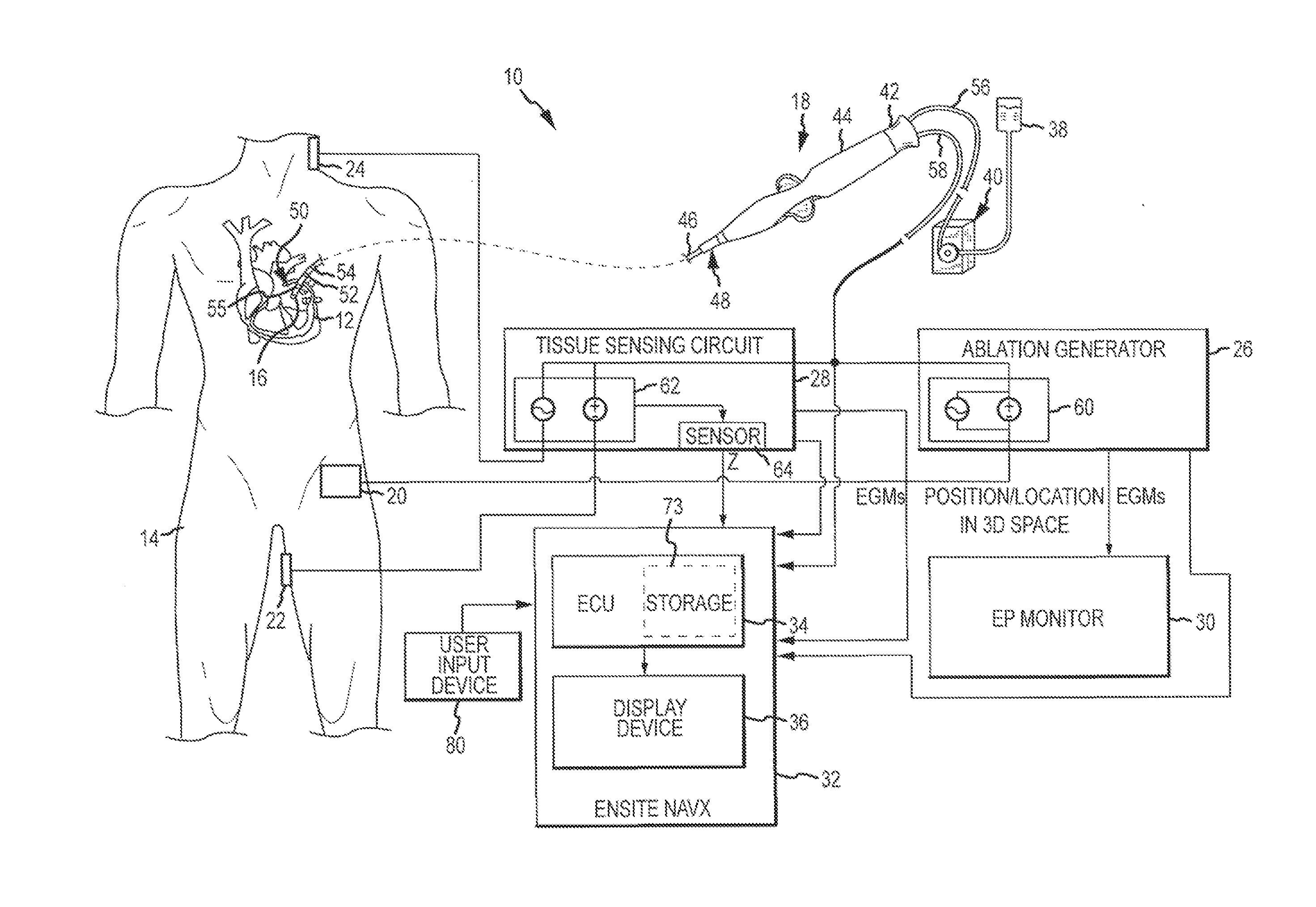System and method for assessing the formation of a lesion in tissue
a tissue and lesion technology, applied in the field of tissue lesion formation system and method, can solve the problems of varying ailments and even death, difficult to evaluate, assess and/or determine the depth of a lesion in the tissue, and difficult to determine whether the tissue has been sufficiently or acceptably ablated, or at least whether the lesion has reached the desired depth
- Summary
- Abstract
- Description
- Claims
- Application Information
AI Technical Summary
Benefits of technology
Problems solved by technology
Method used
Image
Examples
Embodiment Construction
[0039]Referring now to the drawings wherein like reference numerals are used to identify identical components in the various views, FIG. 1 illustrates one exemplary embodiment of a system 10 configured, at least in part, for assessing the formation of a lesion in a tissue 12 of a body 14 as a result of an ablation procedure being performed on the tissue 12. In an exemplary embodiment wherein the tissue 12 is cardiac tissue, the system 10 is configured to assess the formation of a lesion in the tissue 12 being ablated by radio frequency (RF) energy or power delivered from an electrode 16 disposed on a catheter 18. For the sake of clarity and brevity alone, the description set forth below will be with respect to cardiac tissue only. It should be understood, however, that the present disclosure may find application in connection with assessing lesion depth in other types of tissue during ablation procedures. Accordingly, the present disclosure is not meant to be limited solely to cardi...
PUM
 Login to View More
Login to View More Abstract
Description
Claims
Application Information
 Login to View More
Login to View More - R&D
- Intellectual Property
- Life Sciences
- Materials
- Tech Scout
- Unparalleled Data Quality
- Higher Quality Content
- 60% Fewer Hallucinations
Browse by: Latest US Patents, China's latest patents, Technical Efficacy Thesaurus, Application Domain, Technology Topic, Popular Technical Reports.
© 2025 PatSnap. All rights reserved.Legal|Privacy policy|Modern Slavery Act Transparency Statement|Sitemap|About US| Contact US: help@patsnap.com



